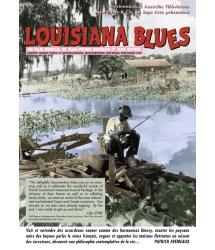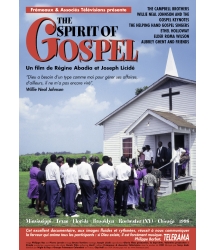- Our Catalog
- Philosophy
- Philosophers of the 20th century and today
- History of Philosophy (PUF)
- Counter-History and Brief Encyclopedia by Michel Onfray
- The philosophical work explained by Luc Ferry
- Ancient thought
- Thinkers of yesterday as seen by the philosophers of today
- Historical philosophical texts interpreted by great actors
- History
- Books (in French)
- Social science
- Historical words
- Audiobooks & Literature
- Our Catalog
- Jazz
- Blues
- Rock - Country - Cajun
- French song
- World music
- Africa
- France
- Québec / Canada
- Hawaï
- West Indies
- Caribbean
- Cuba & Afro-cubain
- Mexico
- South America
- Tango
- Brazil
- Tzigane / Gypsy
- Fado / Portugal
- Flamenco / Spain
- Yiddish / Israel
- China
- Tibet / Nepal
- Asia
- Indian Ocean / Madagascar
- Japan
- Indonesia
- Oceania
- India
- Bangladesh
- USSR / Communist songs
- World music / Miscellaneous
- Classical music
- Composers - Movie Soundtracks
- Sounds of nature
- Our Catalog
- Youth
- Philosophy
- News
- How to order ?
- Receive the catalog
- Manifesto
- Dictionnary











- Our Catalog
- Philosophy
- Philosophers of the 20th century and today
- History of Philosophy (PUF)
- Counter-History and Brief Encyclopedia by Michel Onfray
- The philosophical work explained by Luc Ferry
- Ancient thought
- Thinkers of yesterday as seen by the philosophers of today
- Historical philosophical texts interpreted by great actors
- History
- Books (in French)
- Social science
- Historical words
- Audiobooks & Literature
- Our Catalog
- Jazz
- Blues
- Rock - Country - Cajun
- French song
- World music
- Africa
- France
- Québec / Canada
- Hawaï
- West Indies
- Caribbean
- Cuba & Afro-cubain
- Mexico
- South America
- Tango
- Brazil
- Tzigane / Gypsy
- Fado / Portugal
- Flamenco / Spain
- Yiddish / Israel
- China
- Tibet / Nepal
- Asia
- Indian Ocean / Madagascar
- Japan
- Indonesia
- Oceania
- India
- Bangladesh
- USSR / Communist songs
- World music / Miscellaneous
- Classical music
- Composers - Movie Soundtracks
- Sounds of nature
- Our Catalog
- Youth
- Philosophy
- News
- How to order ?
- Receive the catalog
- Manifesto
- Dictionnary
UN COURS VIDÉO DE CONSTANCE FREI
Ref.: FA4025
EAN : 3561302402581
Artistic Direction : CONSTANCE FREI
Label : Frémeaux & Associés
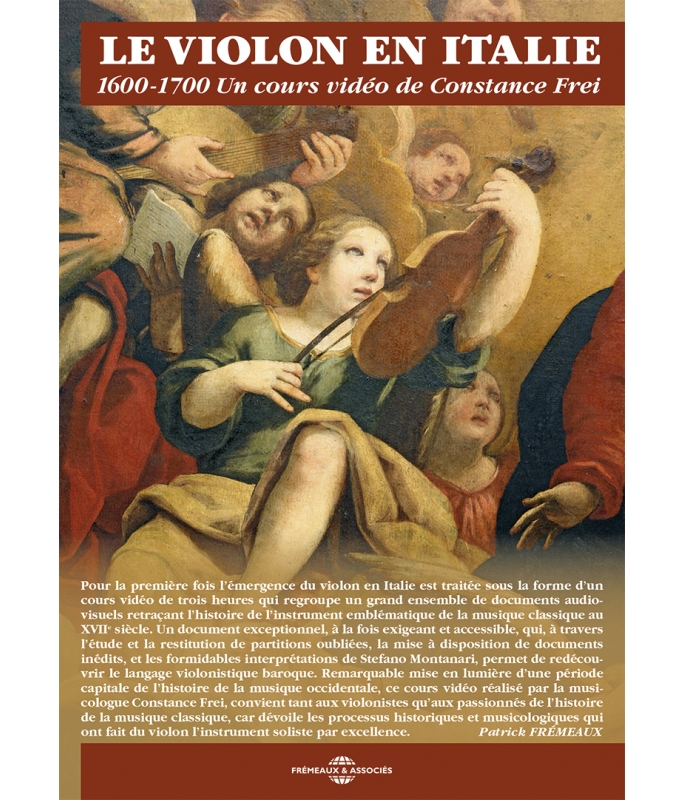
UN COURS VIDÉO DE CONSTANCE FREI
UN COURS VIDÉO DE CONSTANCE FREI
Constance Frei, a musicologist at the University of Geneva and herself a violinist and documentary-maker, has provided us with a three-hour video-class on the violin in 17th century Italy. Her programme takes the form of an interactive chart allowing us to navigate through an absorbing didactic work divided into six parts, each subdivided into different chapters. This DVD groups together historical and musicological analyses, musical performance-practises, studies related to instrument-making, various scores, interviews and concerts. The DVD also features the participation of Stefano Montanari, a violin virtuoso who has conducted numerous operas at the Teatro La Fenice in Venice and at the Opera in Lyon; he is a renowned baroque violin expert. Augustin BONDOUX
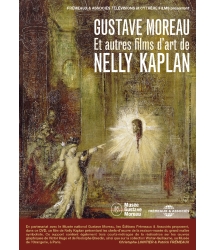
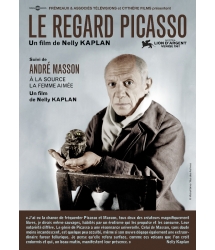

Le Violon en Italie FA4025
Le violon en Italie
1600-1700
Un cours vidéo de Constance Frei
Pour la première fois l’émergence du violon en Italie est traitée sous la forme d’un cours vidéo de trois heures qui regroupe un grand ensemble de documents audio-visuels retraçant l’histoire de l’instrument emblématique de la musique classique au XVIIe siècle. Un document exceptionnel, à la fois exigeant et accessible, qui, à travers l’étude et la restitution de partitions oubliées, la mise à disposition de documents inédits, et les formidables interprétations de Stefano Montanari, permet de redécouvrir le langage violonistique baroque. Remarquable mise en lumière d’une période capitale de l’histoire de la musique occidentale, ce cours vidéo réalisé par la musicologue Constance Frei, convient tant aux violonistes qu’aux passionnés de l’histoire de la musique classique, car dévoile les processus historiques et musicologiques qui ont fait du violon l’instrument soliste par excellence.
Patrick FRÉMEAUX
« Qui penserait que pour construire un violon, il faut d’abord tracer deux pentagones dans un cercle ? »
Stradivarius
La main droite du violoniste
Depuis 2001 mon travail de musicologue m’a conduit à l’étude de l’histoire du violon en Italie au XVIIe siècle : plus précisément sur un aspect spécifique de la pratique de l’instrument. Celle qui concerne la main droite du violoniste, celle qui manie l’archet. L’archet du violoniste est son moyen d’expression, c’est avec lui qu’il parle, raconte, récite, prononce…
Ce documentaire de trois heures à la découverte des inventions les plus extravagantes, capricieuses et singulières de la pratique violonistique italienne présente de nombreuses œuvres de compositeurs célèbres comme Biagio Marini, Marco Uccellini, Arcangelo Corelli : et pour la première fois de nombreux extraits du répertoire violonistique d’auteurs peu connus comme Tomaso Pegolotti, Ipolito Boccaletti, Giuseppe Colombi, Bartolomeo Montalbano et bien d’autres. Ces trésors du répertoire baroque italien sont restitués à travers les multiples inflexions de l’archet luxuriant du violoniste Stefano Montanari, atteignant un équilibre idéal entre l’écrit et l’art éphémère de l’improvisation inhérent au langage violonistique de l’époque.
Divisé en six parties – chacune comportant plusieurs chapitres – ce documentaire délivre une quantité inouïe d’informations nouvelles, fruit de nombreuses années de recherches dans différentes bibliothèques d’Italie et d’Europe. Des reproductions de documents originaux et rares (souvent des unica), divers interviews de spécialistes, des descriptions extraites d’ouvrages théoriques, ainsi que des photographies de tableaux et de fresques illustrant les différentes formes et tenues de l’archet offrent au musicien une grande richesse de connaissances qui lui permettront d’aborder avec lucidité l’ensemble du répertoire italien du 17e siècle.
La première partie, intitulée introduction, présente les quatre lieux de tournage bolonais, à savoir : l’église de San Michele in Bosco, l’Accademia Filarmonica, l’Oratorio della Vita et enfin la bibliothèque du Père Martini. Pourquoi Bologne ? Au 17e siècle, la cité de San Petronio est témoin d’une vie musicale intense : elle accueille de nombreux compositeurs et violonistes. C’est dans cette ville qu’un siècle plus tard, le Père Giovanni Battista Martini réunit une des plus grandes collections au monde de partitions des 16e et 17e siècles. Un trésor inestimable qui recèle encore aujourd’hui la majeure partie du répertoire imprimé pour violon du 17e siècle.
La deuxième partie propose une brève histoire, divisée en quatre chapitres, abordant les questions concernant la fabrication du violon et de son archet, ainsi que leurs caractéristiques et propriétés en rapport au violon « moderne », les limites et possibilités techniques de la typographie à caractères mobiles – moyen d’impression le plus usité au 17e siècle – et tout ce qui touche à l’improvisation ou l’arte di passeggiare e diminuire.
S’ensuit un concert d’une durée de 40 minutes présentant une dizaine de pièces organisées chronologiquement, de 1610 à 1700. Le musicien peut ainsi observer les différentes pratiques d’exécution et s’imprégner du style, avant d’aborder la suite du documentaire dédiée à l’ensemble des aspects techniques.
Les trois sections suivantes sont consacrées respectivement à l’articulation, à l’ornementation et aux autres pratiques d’exécution. On y découvre tous les secrets de l’art de l’archet à travers les différents chapitres consacrés aux Legato, Portato, Sciolto, Spiccato, Staccato – sans oublier le demi-cercle, un symbole d’articulation jusqu’ici ignoré – Tremolo, Affetti, Puntato, Groppo, Trillo, Ribattuta, Scordatura, polyphonie, dynamique et, pour terminer, les incontournables imitations. Cette partie, d’une durée d’environ 1h30, divulgue l’ensemble des secrets de la technique violonistique italienne du 17e siècle en abordant chacune des particularités de manière approfondie, par la confrontation des sources écrites (partitions et traités) d’une part, et de leurs réalisations sonores d’autre part, à travers de nombreux exemples musicaux extraits des derniers témoins d’une musique pratiquée il y a près de 400 ans.
Constance Frei
Ce documentaire est le fruit de nombreuses années de recherche qui ont également fait l’objet d’un livre : Constance Frei, L’Arco Sonoro. Articulation et Ornementation : les différentes pratiques d’exécution pour violon en Italie au XVIIe siècle (Lucca, LIM 2011, 658 pages, www.lim.it).
Avec le généreux soutien du Museo Internazionale e Biblioteca della Musica de Bologne et la Biblioteca Estense Universitaria de Modène.
The Violinist’s Right Hand
Since 2001,my musicological work led me to study the history of the violin in Italy in the 17th century, focusing on its performance practice. In particular on that of the right hand, entrusted with handling the bow, which is the means of expression for violinists: it is through the bow that they speak, relate, act, pronounce…
This documentary, whose duration is 180 minutes, presents the outcome of my investigation, and leads musicians and music lovers into the discovery of the oddities, the peculiarities, and the most bizarre inventions in the field of Italian violin practice: great numbers of them appear in the works of well-known composers such as Biagio Marini, Marco Uccellini,and Arcangelo Corelli. Moreover, I present, for the first time, some specimens of the violin creativeness of little-known composers such as Tomaso Pegolotti, Ipolito Boccaletti, GiuseppeColombi, Bartolomeo Montalbano, and several others. The precious treasures of the Italian baroque repertoire are revived, thanks to the kaleidoscopic inflections of the luxuriant bow of the violinistStefano Montanari, who is able to achieve an ideal balance between what has been fixed on the score and the sound obtained from it through the fleeting art of improvisation that underlies the violin language of that period.
The documentary, which is divided into six sections, each formed of several chapters, offers aconsiderable quantity of new information, acquired in years of research in various libraries. It gives musicians a wealth of data that can guide them in the Italian 17th century repertoire: documents that are original, rare (in many cases actually unique specimens), interviews with specialists, citations from theoretic works, and reproductions of paintings and frescoes that show the various forms of bows and the ways in which they were held.
The first part is an introduction, and shows the four places of Bologna where the documentary has been made : the basilica of San Michele in Bosco, the Accademia Filarmonica, the Oratorio della Vita, and FatherGiovanni Battista Martini’s library. Why Bologna? Because in the 17th century this city was characterised by an intense musical life, and accommodated a great number of composers and violinists. And also because in Bologna Martini assembled one of the most important collections in the world of 16th- and 17th century scores, a treasure that includes most of the sources of violin music printed in the 17th century.
The second part contains a concise history, andisdivided into four chapters, in which the various aspects of the construction of a violin and its bow are elucidated, and their peculiarities in comparison with the “modern” violin are analysed. Moreover this part explores the resources, and also the technical limitations, of movable-type printing, which was in use in the 17th century, and the topics relevant to improvisation or arte di passeggiare e diminuire.
This is followed by a 40-minute concert that proposes about ten pieces in chronological order, from 1610 to 1700: they make it possible to understand the various performance practices and to absorb their style, before proceeding to the analysis of the technical aspects that is contained in the second half of the documentary.
The three subsequent sections deal respectively with articulation, ornamentation and other performance practices. In their various chaptersthey disclose the secrets of the bow: Legato, Portato, Sciolto, Spiccato, Staccato-includingSemicerchio(semicircle), an articulation symbol unknown until now-Tremolo, Affetti, Puntato, Groppo, Trillo, Ribattuta, Scordatura, polyphony, dynamics, and lastly, the many-sided “imitations”. This part, whose duration is approximately 90 minutes, delves into the secrets of 17th century Italian violin technique, exploring all their aspects through a comparison between the sources (i.e. scores and treatises) and translating them into sounds, by means of a great number of examples drawn from the last pieces of evidence of a repertoire that was practised almost four hundred years ago.
Constance Frei (Trad. Marta Innocenti)
The fruits of the long years of research that produced this documentary are published in the book ConstanceFrei,L’Arco Sonoro. Articulation et Ornementation: les différentes pratiques d’exécution pour violon en Italie au XVIIe siècle (Lucca, LIM 2011, 658pp.,www.lim.it).
With the generous support of the Museo Internazionale e Biblioteca della Musica of Bologna and the Biblioteca Estense Universitaria of Modena.
La mano destra del violinista
Sin dal 2001, il mio lavoro musicologico mi ha condotto allo studio della storia del violino in Italia nel XVII secolo, approfondendone la prassi esecutiva. In particolare quella legata alla mano destra, cui spetta l’uso dell’arco che è il tramite espressivo del violinista: è con quello che egli parla, racconta, recita, pronuncia…
Il presente documentario, della durata di 180 min., presenta l’esito della mia indagine, guidando il musicista e il musicofilo alla scoperta delle più stravaganti invenzioni, bizzarrie e peculiarità della pratica violinistica italiana di cui abbondano le opere di celebri compositori tra i quali Biagio Marini, Marco Uccellini e Arcangelo Corelli. Inoltre, per la prima volta, vengono offerti saggi della creatività violinistica di autori poco noti come ad esempio Tomaso Pegolotti, Ipolito Boccaletti, Giuseppe Colombi, Bartolomeo Montalbano e tanti altri. I preziosi tesori del repertorio barocco italiano sono restituiti grazie alle caleidoscopiche inflessioni del lussureggiante archetto del violinista Stefano Montanari, capace di raggiungere un equilibrio ideale tra ciò che è fissato sulla pagina e quello che da essa si traduce in suono mediante l’arte effimera dell’improvvisazione sottesa al linguaggio violinistico dell’epoca.
Diviso in sei sezioni - ognuna delle quali articolata in vari capitoli - questo documentario rivela una considerevole quantità di informazioni inedite, derivate da anni di ricerche nelle varie biblioteche, fornendo al musicista una dovizia di informazioni utili a guidarlo nel repertorio italiano del XVII secolo: documenti originali e rari (sovente veri e propri unica), interviste a specialisti, citazioni da opere teoriche, riproduzioni di quadri e di affreschi che illustrano le differenti forme di archetto e la loro tenuta.
La prima parte, intitolata Introduzione, presenta i quattro luoghi di Bologna ove è stato realizzato: la basilica di San Michele in Bosco, l’Accademia Filarmonica, l’Oratorio della Vita ed infine la Biblioteca di Padre Giovanni Battista Martini. Perchè Bologna? Perché nel XVII secolo, la città petroniana fu testimone di un’intensa vita musicale accogliendo numerosi compositori e violinisti. Ed inoltre, perchè a Bologna Martini realizzerà una delle più importanti collezioni al mondo di partiture del XVI e del XVII secolo, un tesoro che accoglie la più parte delle fonti della musica violinistica stampata nel Seicento.
La seconda parte propone una breve Storia articolata in quattro capitoli nei quali vengono esposti i vari aspetti della costruzione del violino e del suo archetto, analizzandone le peculiarità in relazione al violino «moderno». Sono inoltre esplorate le risorse, ma anche i limiti tecnici, della tipografia a caratteri mobili - metodo di stampa in uso nel XVII secolo - e quanto concerne l’improvvisazione o l’arte di passeggiare e diminuire.
Segue un Concerto di 40 min. che propone una decina di brani ordinati cronologicamente, dal 1610 al 1700, coi quali si possono comprendere le differenti prassi esecutive e assimilarne lo stile, prima di procedere all’analisi degli aspetti tecnici contenuta nella seconda metà del documentario.
Le tre successive sezioni sono rispettivamente dedicate all’Articolazione, all’Ornamentazione e alle altre pratiche esecutive. Vi sono svelati i segreti dell’arte dell’archetto nei diversi capitoli: Legato, Portato, Sciolto, Spiccato, Staccato - senza trascurare il Semicerchio, simbolo d’articolazione sino ad oggi ignorato - Tremolo, Affetti, Puntato, Groppo, Trillo, Ribattuta, Scordatura, polifonia, dinamica e, per finire, le multiformi «imitazioni». Questa parte, della durata di ca. 90 min., approfondisce i segreti della tecnica violinistica italiana del XVII secolo, esplorandone ogni aspetto grazie al confronto delle fonti (partiture e trattati) e fornendone la traduzione sonora con numerosi esempi tratti dalle ultime testimonianze di un repertorio praticato quasi quattrocento anni fa.
Constance Frei (Trad. Andrea Macinanti)
I frutti dei lunghi anni di ricerca da cui è nato questo documentario sono editi nel libro: Constance Frei, L’Arco Sonoro. Articulation et Ornementation : les différentes pratiques d’exécution pour violon en Italie au XVIIe siècle (Lucca, LIM 2011, 658pp., www.lim.it).
Con il generoso sostegno del Museo Internazionale e Biblioteca della Musica di Bologna e della Biblioteca Estense Universitaria di Modena.
Constance Frei, musicologue à l’Université de Genève, violoniste et documentariste propose un cours vidéo en 3 heures sur le violon en Italie au XVIIe siècle. Un programme sous forme de carte interactive permet de naviguer à l’intérieur de ce passionnant corpus didactique divisé en 6 parties, elles-mêmes regroupant plusieurs chapitres. Ce DVD regroupe analyses historiques et musicologiques, pratiques d’exécutions musicales, études de lutherie, de partitions, entretiens et concert. A noter la participation de Stefano Montanari, violoniste virtuose, chef d’orchestre de nombreux opéras à la Fenice de Venise et l’Opéra de Lyon, et grand spécialiste du violon baroque.
Augustin BONDOUX
The emergence of the violin in Italy is treated here for the first time in a three-hour video-class gathering numerous audiovisual documents in order to retrace the history of this emblematic instrument in 17th century classical music. The result is an exceptional document, both demanding and accessible, which allows us to rediscover the baroque language of the violin through the study and restoration of forgotten scores, previously-unpublished documents, and the wonderful performances of Stefano Montanari. This wonderful video-class put together by musicologist Constance Frei throws new light on a capital period in western music, and deserves attention from both violinists and lovers of classical music-history: it reveals all the historical and musicol-ogical processes which have made the violin the solo instrument par excellence.
Patrick FRÉMEAUX
Constance Frei, a musicologist at the University of Geneva and herself a violinist and documentary-maker, has provided us with a three-hour video-class on the violin in 17th century Italy. Her programme takes the form of an interactive chart allowing us to navigate through an absorbing didactic work divided into six parts, each subdivided into different chapters. This DVD groups together historical and musicological analyses, musical performance-practises, studies related to instrument-making, various scores, interviews and concerts. The DVD also features the participation of Stefano Montanari, a violin virtuoso who has conducted numerous operas at the Teatro La Fenice in Venice and at the Opera in Lyon; he is a renowned baroque violin expert.
Augustin BONDOUX
DVD Le Violon en Italie, Constance Frei © Frémeaux & Associés 2014.
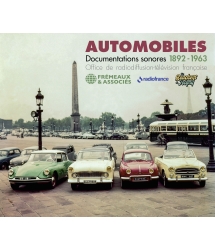
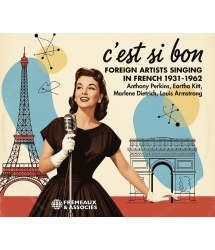
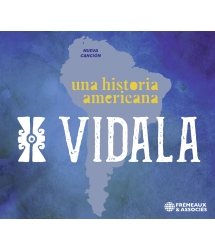
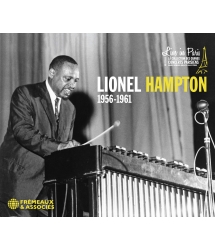

by
Phone
at 01.43.74.90.24
by
to Frémeaux & Associés, 20rue Robert Giraudineau, 94300 Vincennes, France
in
Bookstore or press house
(Frémeaux & Associés distribution)
at my
record store or Fnac
(distribution : Socadisc)

I am a professional
Bookstore, record store, cultural space, stationery-press, museum shop, media library...





